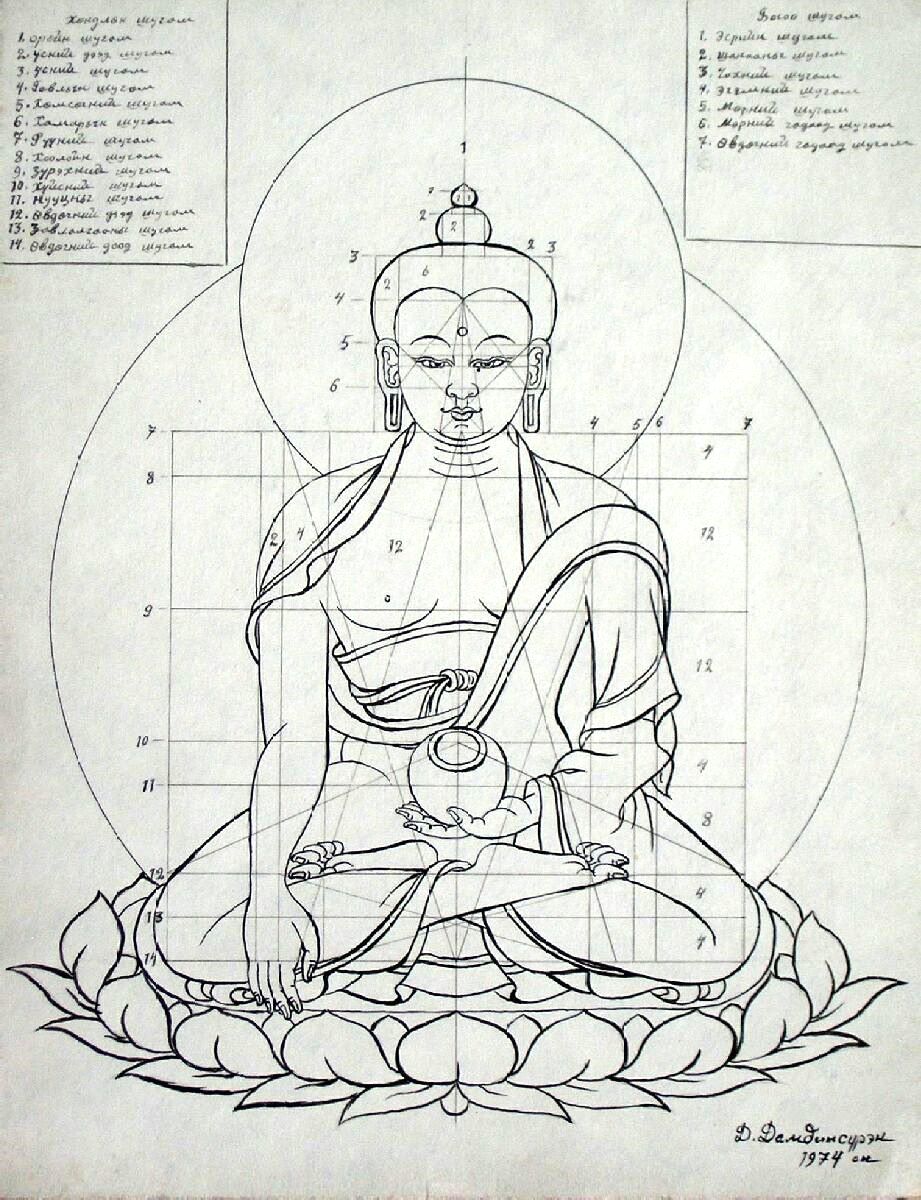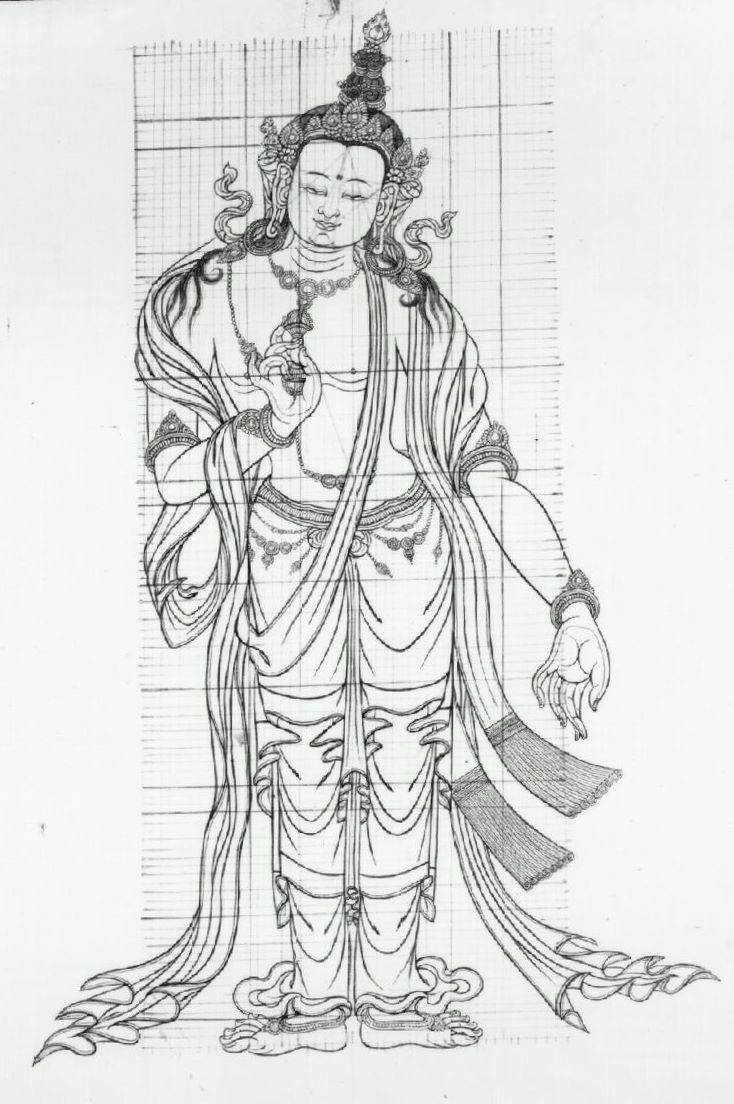Buddhist practice and Buddhist art have been inseparable in the Himalayas ever since Buddhism arrived to the region in the eighth century. But for the casual observer it can be difficult to make sense of the complex iconography. Not to worry—Himalayan art scholar Jeff Watt is here to help. In this “Himalayan Buddhist Art 101” series, Jeff is making sense of this rich artistic tradition by presenting weekly images from the Himalayan Art Resources archives and explaining their roles in the Buddhist tradition.
Iconometry, Proportions & Guidelines
Buddhist artistic traditions of the Himalayas, Tibet, and Central Asia are believed to follow established guidelines for determining body proportions in figurative art. This is called iconometry. The subject is often referred to, discussed, and published by Western scholars. I say “believed” in the first sentence because, though there are systems of proportions, the reality is there is no standard system used by all, and not all artists even use systems of iconometric measurements.
The theory of iconometry is based on taking measurements of the various parts of the human body—head, torso, limbs, fingers—and comparing those measurements to create guidelines for standardized codes for use in art. The measurements can vary greatly according to the different body types, such as buddha figures, peaceful and wrathful deities, and human teachers.
 The earliest code of iconometric measurements used in Himalayan art came from an Indian cultural aesthete, though there are many Indian textual sources which helped to create an early pan-Indian figurative aesthetic. This was naturally adopted by the Buddhists and eventually made its way to the Himalayas and Central Asia. Some early Buddhist textual examples for the study of iconometric proportions include the Manjushri Mulakalpa, Samvarodaya, Krishna Yamari, and Kalachakra tantras.
The earliest code of iconometric measurements used in Himalayan art came from an Indian cultural aesthete, though there are many Indian textual sources which helped to create an early pan-Indian figurative aesthetic. This was naturally adopted by the Buddhists and eventually made its way to the Himalayas and Central Asia. Some early Buddhist textual examples for the study of iconometric proportions include the Manjushri Mulakalpa, Samvarodaya, Krishna Yamari, and Kalachakra tantras.
In practice, iconometry functions as a grid of horizontal and vertical lines with accompanying numerical notations. These grids and measurements are found in published textbooks and are studied by artists from a young age. They are used for both marking the measurements of the figure and also  for arranging the posture of a figure within a composition. These grids guide all different variations: seated or standing postures, placement of hands and arms, even the direction of the head. In depicting deity figures there is the added complexity of multiple heads, arms, and legs.
for arranging the posture of a figure within a composition. These grids guide all different variations: seated or standing postures, placement of hands and arms, even the direction of the head. In depicting deity figures there is the added complexity of multiple heads, arms, and legs.
Students are taught to copy the grid patterns when learning to create their first figure drawings, beginning with the Buddha form. As the students progress, the number of grid lines are reduced. Master artists often only draw a central vertical line as an initial guide, with the figure and surrounding composition done freehand. Excessive reliance on the iconometric grids and measurements in drawing and painting often results in stiff and rigid figures.
Vajrapani. Tibet, 1900–1959. Uncertain lineage. Ground: cotton. Collection of Rubin Museum of Art.
Thank you for subscribing to Tricycle! As a nonprofit, we depend on readers like you to keep Buddhist teachings and practices widely available.
